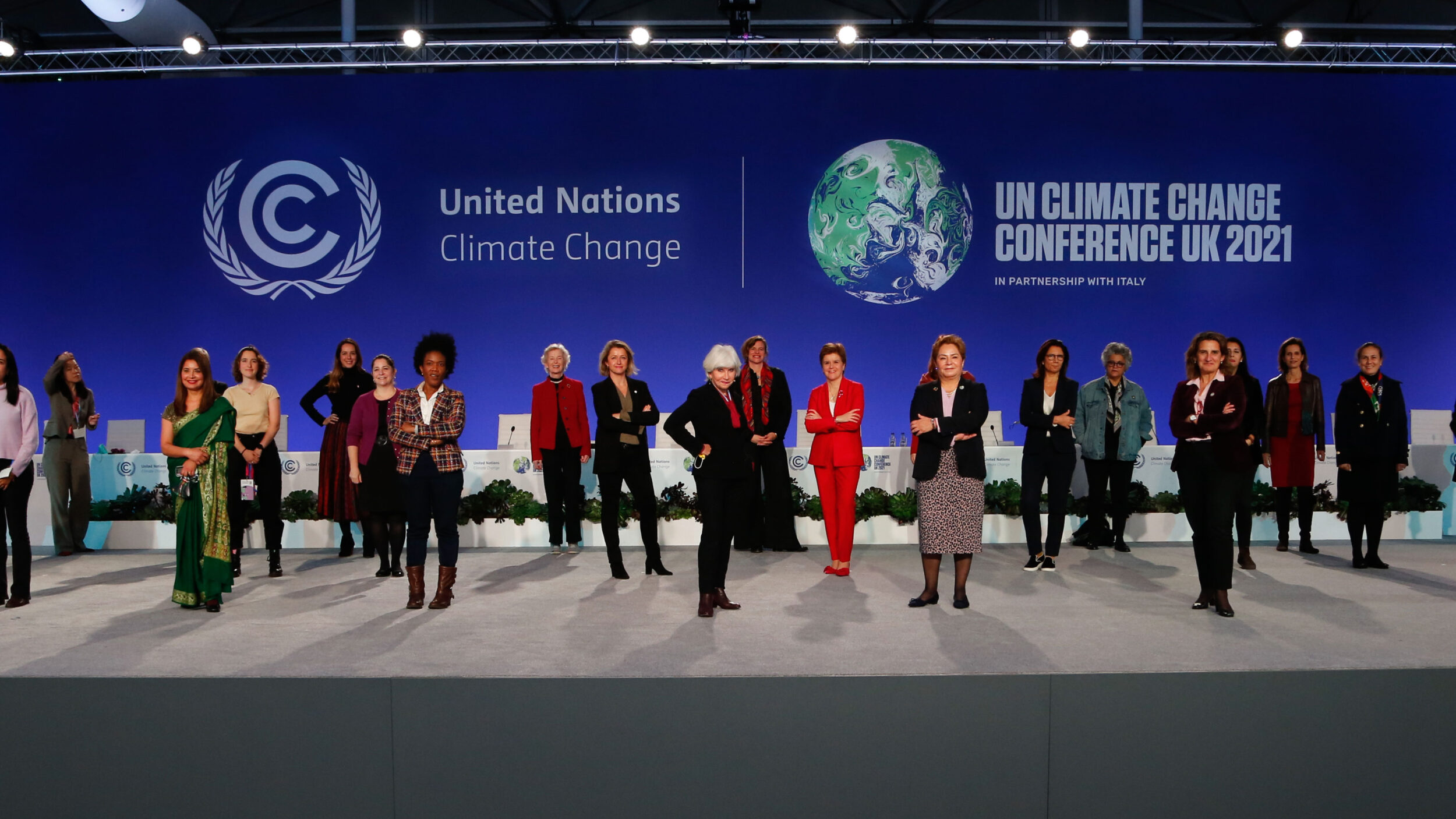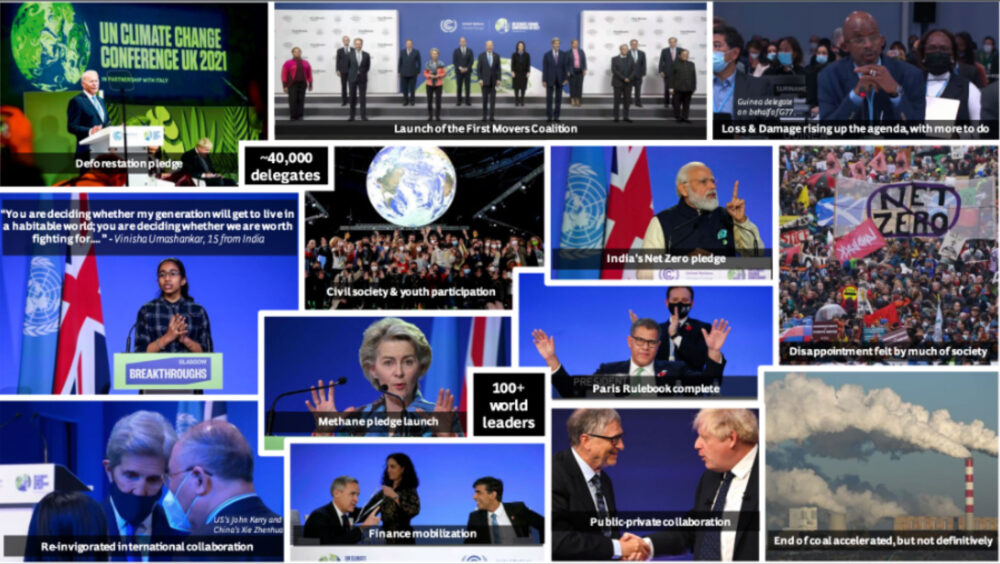This website uses cookies so that we can provide you with the best user experience possible. Cookie information is stored in your browser and performs functions such as recognising you when you return to our website and helping our team to understand which sections of the website you find most interesting and useful.
9 Reasons Why COP26 Wasn’t Just a Load of CO2
Estimated reading time: 5 minutes, 5 seconds

Final Reflections
So was it all blah blah blah? There’s been plenty of criticism reported by media since COP26 closed on the lack of real progress made by the coalition during the event.
Having been there and spoken to a good number of attendees and listened to a good number of presenters (see my previous blogs), on reflection I think the global community is in a better place than it was two weeks ago before COP26. Why?
My top 9 reasons why COP26 was more than just hot air.
I believe there were nine key areas of progress made at the conference:
- 90% of the world now committed to Net-Zero after pledges from India and others
- “Paris Rulebook” completed: the creation of international carbon market and stricter emissions disclosures
- “Phasing down” of coal and fossil fuels highlighted for the first time in a COP final agreement
- Joint policy commitments on deforestation, methane, and international coal financing
- Reinvigorated international collaboration: joint US-China declaration on climate collaboration, $8.5 billion Just Energy Transition Partnership for South Africa
- Private sector mobilization: 5,200+ businesses and approximately 450 financial institutions (40% of financial assets) committing to science-based Net-Zero targets
- Growing private-public collaboration, including global initiatives to develop, scale, and deploy the technologies required to address hard-to-abate sectors.
- Steps toward robust and transparent disclosure and reporting of private-sector plans
- Agreement for developed countries to double collective funds for adaptation by 2025

Source: Boston Consulting Group, Inside COP26: Kickstarting a decade of delivery
A phrase I heard from Peter Lacey during the conference was “narrow COP”, referring to the headline agreements reached during the forum instead of “broad COP”, which refers to the ongoing work around the world. In terms of narrow COP, I think the nine points above give us hope that significant progress was made.
In terms of broader COP, we need to ensure to keep up the momentum:
- Revisiting national ambitions on mitigation more frequently and boldly
- Rapidly developing and implementing just and effective policies to translate commitments into action
- Creating robust and transparent private-sector abatement plans that span value chains
- Coming up with solid adaptation and resilience plans, with more support for the countries that will feel the most significant impact and are least able to afford the needed solutions
What does this mean for an Augmented Business Intelligence company like Brainnwave?
I must work with my leadership team to embed climate culture in our behaviours. We have started by appointing one of our senior leaders as head of sustainability, reporting directly to me. This is just a first step; we must be mindful of building our incentives and planning to bring our employees on the Net-Zero journey.
We must understand our emissions across our value chain (or scope three emissions) and understand what it takes to align to the 1.5°C. As a cloud-based services provider, our impact is already significantly mitigated; however, we can do more. Deploying cloud services with a service provider that is similarly focused on becoming Net-Zero is vital. For anyone wondering how, this article from Wired has an excellent framework to assess each cloud provider. With features, availability, and cost, incorporating this into our decisions will form part of our sustainability strategy.
We must not underestimate our role in driving innovation into the low-carbon economy and developing a deep understanding of how our technology and approach to machine learning and AI can help our clients in their actions on their Net-Zero journey.
On this last point, I genuinely believe that Brainnwave is in a solid position to help our clients move quickly. The most urgent need is to implement transparent ways to measure and understand their emissions footprint and develop credible action plans tightly coupled with company strategy to deliver Net-Zero. Our solutions and technology can help provide this, and achieving that level of ESG data transparency requires a few essential steps:
- Create an architecture for the data stack/landscape to ensure the data is interoperable and integrated across the organization
- Ensure the data layer is easily queried and analysed with appropriate data tooling
- Integrate the data sources with effective third-party providers, like ESG rating firms, to leverage the data output to produce a sustainability score or report
Brainnwaves’ unique combination of skills and capabilities, refined over the last six years, from a team of data scientists, analysts and engineers, brings an agile and specialist understanding of how to optimize cloud technology and deliver the kind of software-based solutions that meet the highly complex challenges now being faced by businesses worldwide.
Brainnwaves’ complementary skills and technology will enable our clients to report on their sustainability ledger with the same rigour as their financial ledger. Tomorrow we will be announcing major news, which demonstrates our commitment to providing our clients with the right tools and knowledge to deliver on these ambitions.
As my ex-colleagues at Boston Consulting Group (BCG) put it, COP26 over-delivered given the politics and underdelivered given the science. In Rich Lesser’s (Global Chair of BCG) reflections, he suggested watching an inspiring five-minute speech by Vinisha Umashanker, a 15-year-old from India, and an Earth shot Prize finalist with our own children. I did that, and I highly recommend you do the same, as Vinisha so eloquently put it: “You are deciding whether my generation will get to live in a habitable world: you are deciding whether we are worth fighting for….”
So was it all just blah blah blah? While the optimists and pessimists argue about how full or empty the glass is on that point, I prefer to be opportunistic, drink the water and move forward quickly; there simply isn’t time to procrastinate.
Acknowledgements:
I am very grateful to John Downie at Accenture for inviting me to the Accenture COP26 programme and allowing me to be part of such an important global event.
I am equally grateful to my ex-colleagues at BCG for their excellent distillation of the key takeaways from COP26, from which I have borrowed heavily for this blog. I highly recommend reading the summary produced by BCG: Learnings from COP26 here.
Main photo credit: Scottish Government. Used under a CC licence.

